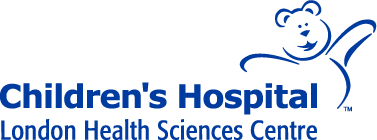Disclaimer to the Online Edition
This Manual has been designed for use in the NICU at London Health Sciences Centre (LHSC), London, Ontario, Canada, and represents clinical practice at this institution. The information contained within the Manual may not be applicable to other centres. If users of this Manual are not familiar with a drug, it is recommended that the official monograph be consulted before it is prescribed and administered. Any user of this information is advised that the contributors, Editor and LHSC are not responsible for any errors or omissions, and / or any consequences arising from the use of the information in this Manual.
digoxin
Indication
- For the treatment of congestive heart failure; also to slow the ventricular rate in dysrhythmias such as atrial fibrillation, atrial flutter and supraventricular tachycardia
Pharmacology
- Digoxin is a cardiac glycoside with positive inotropic and negative chronotropic actions
- The average oral absorption in neonates is approximately 70%
- Peak serum levels after oral administration occur by 1 to 3 hours
- Elimination half life in premature neonates is 61 to 170 hours and in full term neonates is 35 to 45 hours
- Digoxin has a very large volume of distribution; the drug attains concentrations in tissues (eg. myocardium, skeletal muscle, kidney, liver) up to 150 times serum concentrations
- About 4 to 6 hours are required after an oral or IV dose for distribution to be complete; therefore, serum levels should not be taken before 6 to 8 hours, and preferably at least 12 hours, after administration of a dose
- Serum digoxin is approximately 20% bound to plasma proteins in neonates
- An endogenous substance has been found in the serum of premature and term infants which cross-reacts with the radioimmunoassay (RIA)
- Digoxin is eliminated mainly by the kidneys; its clearance from the body parallels the maturation of kidney function
- Digoxin's positive ionotropic action is thought to be related to inhibition of the sarcolemmal Na+-K+ ATPase; the consequent elevation of intracellular Na+ activates the trans-sarcolemmal Na+-Ca exchange system; this creates an outflux of Na+, and an influx of Ca, resulting in a positive inotropic effect
- Digoxin indirectly increases vagal activity, thus slowing SA and AV nodal activity
Side Effects
- Toxic doses can produce cardiac arrhythmias, ventricular extrasystoles, AV block
- Toxic effects are potentiated by high serum Ca, low serum K, and increased/decreased serum Mg
- Vomiting, feeding intolerance, diarrhea
- Drowsiness, lethargy
Precautions
- Therapeutic digoxin serum levels 1.0 - 2.6 nmol/L; these are somewhat unreliable in the newborn but are useful to indicate toxicity
- Routine Monitoring - digoxin serum levels should be taken after digitalization and once weekly while on maintenance therapy; serum levels are taken preferably at least 12 hours after administration of a dose
- Monitor intake and output
- The response to digoxin is variable; a premature, asphyxiated or hypoxic baby is extremely sensitive
- Take the apical heart rate for one full minute prior to giving the medication; if the heart rate is less than 100 beats/minute, consult the physician; the drug may be held and an ECG done to measure the PR interval to see if there is sinus arrhythmia
- In renal impairment, reduce or hold the dose of digoxin
Dose
Total digitalizing dose:
- The Total Loading (Digitalizing) Dose is administered in 3 Equally Divided Doses or in 3 Unequally Divided Doses (1/2, 1/4, 1/4) given every 8 hours.
| WEIGHT (g) | TOTAL DIGITALIZING DOSE | |
| IV (mcg/kg) | PO (mcg/kg) | |
500 - 1000 | 15 15 to 22.5 22.5 22.5 to 30 | 20 20 to 30 30 30 to 40 |
THE DOSE MUST BE CHECKED AND SIGNED BY 2 STAFF (PHYSICIAN, REGISTERED NURSE, PHARMACIST) MEMBERS.
- IV dose can be given push
Maintenance dose:
- The first Maintenance dose should NOT be given any earlier than 24 hours after the loading dose in premature infants any earlier than 12 hours after the loading dose in full-term neonates and infants (1-2 months old).
| WEIGHT (g) | DAILY MAINTENANCE DOSE | |
| IV (mcg/kg) | PO (mcg/kg) | |
500 - 1000 | 4 4 to 5.5 5.5 5.5 to 7.5 | 5 5 to 7.5 7.5 7.5 to 10 |
- Dose given once daily
Supplied
- Pediatric Ampoule 50 mcg/mL (0.05 mg/mL), discontinued by manufacturer 2014
- Digoxin 0.25mcg/mL commercial product
- Pediatric Syringe 25 mcg/mL (0.025 mg/mL), prepared by Pharmacy
- Pediatric Elixir 50 mcg/mL (0.05 mg/mL)
References
- Roberts, RJ: Drug Therapy in Infants, W.B. Saunders, Toronto, 1984.
- Taketomo CK, Hodding JH and Kraus DM: Pediatric Dosage Handbook, Lexi-Comp Inc., Cleveland, 1992.
- Young TE and Mangum OB: Neofax - A Manual of Drugs Used in Neonatal Care, Columbus, Ohio: Ross Laboratories, 1992.
- Goldsmith JP, Karotkin EH and Barker S (eds): Assisted Ventilation of the Neonate, 2nd Edition, W.B. Saunders Co, 1988 (p.293).
